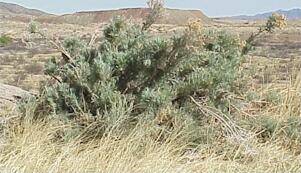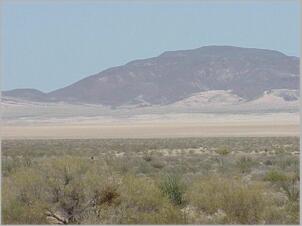SALTBUSHES There are many species of saltbush in the genus Atriplex. These plants belong to the family Chenopodiaceae, which includes several common weeds such as Russian thistle (tumbleweed) but also some economically important plants such as spinach, sugar beet, etc. Saltbushes are well-adapted to grow in salty or alkaline sites where the soils are silty or gravelly and thus retain little water. Often they are the only plants that can tolerate these conditions, so they can form extensive stands. All these plants have greyish-green leaves with hairs that secrete excess salt onto the leaf surface, to maintain the plant's internal salt balance. The common desert species include shadscale, four-wing saltbush, desert holly and desert saltbush. They often exhibit a special type of photosynthesis called C4 photosynthesis, which enables them to synthesise sugars - albeit sometimes at a low rate - in the hottest conditions when other plants shut down their photosynthesis. Four-wing saltbush (Atriplex canescens)
Desert saltbush (Atriplex polycarpa)
Playas Playas are temporary lakes that are dry for most of the year, but they periodically accumulate water as run-off from the surrounding higher ground after heavy rainfall. The high salt content of playas usually prevents plants from growing, but the slightly higher land around them can have extensive areas dominated by saltbushes.
Go to Four-wing
saltbush? |
||||





